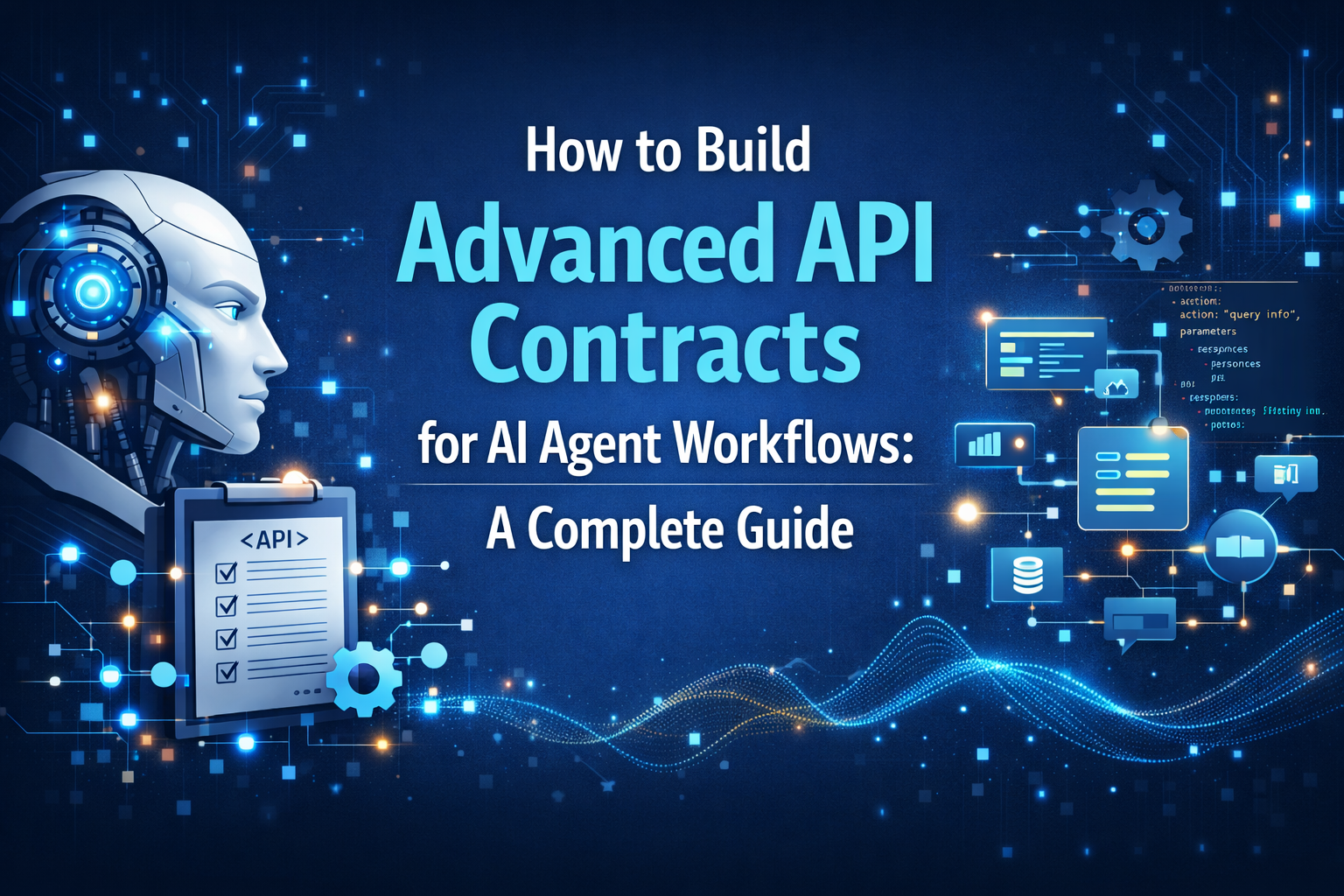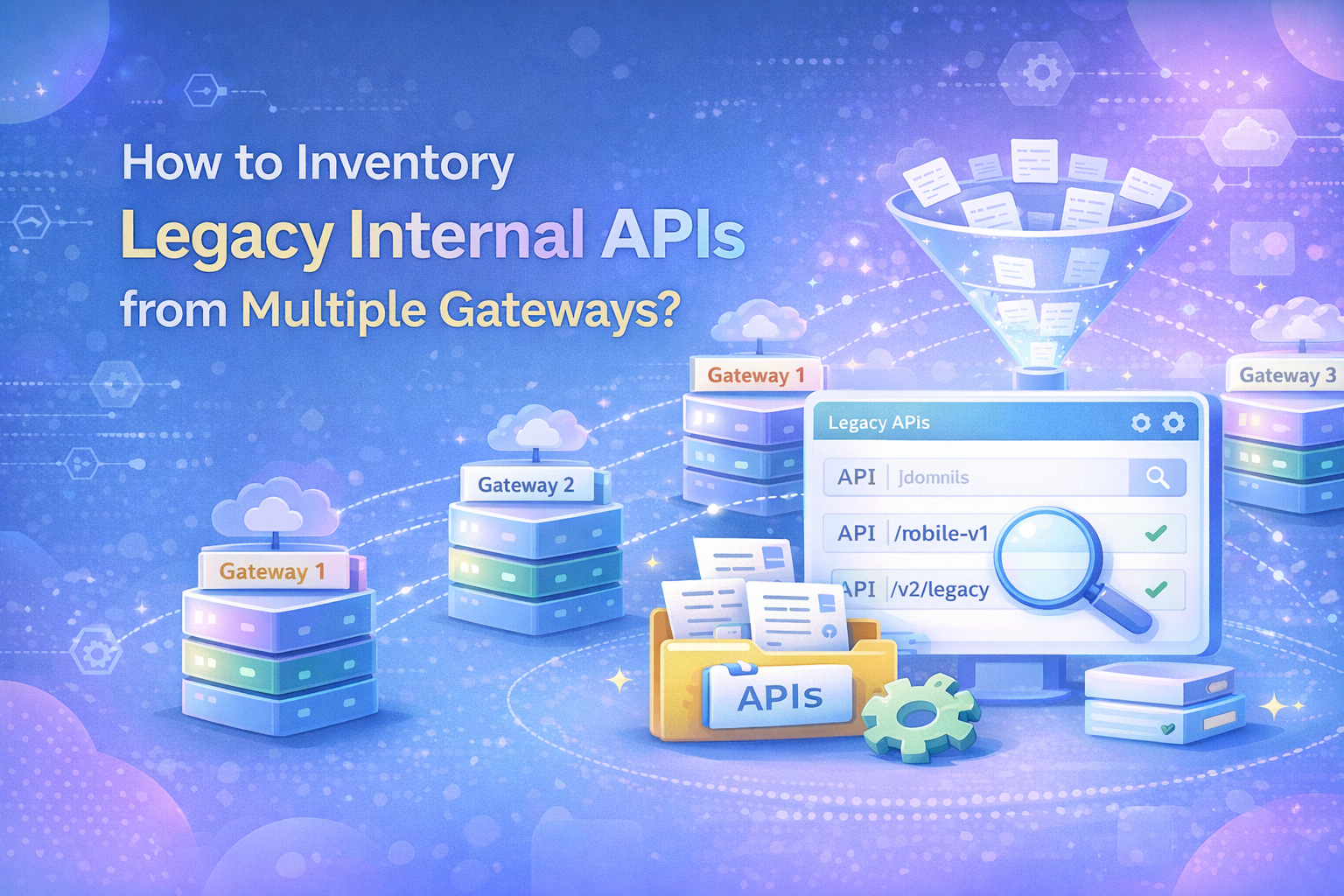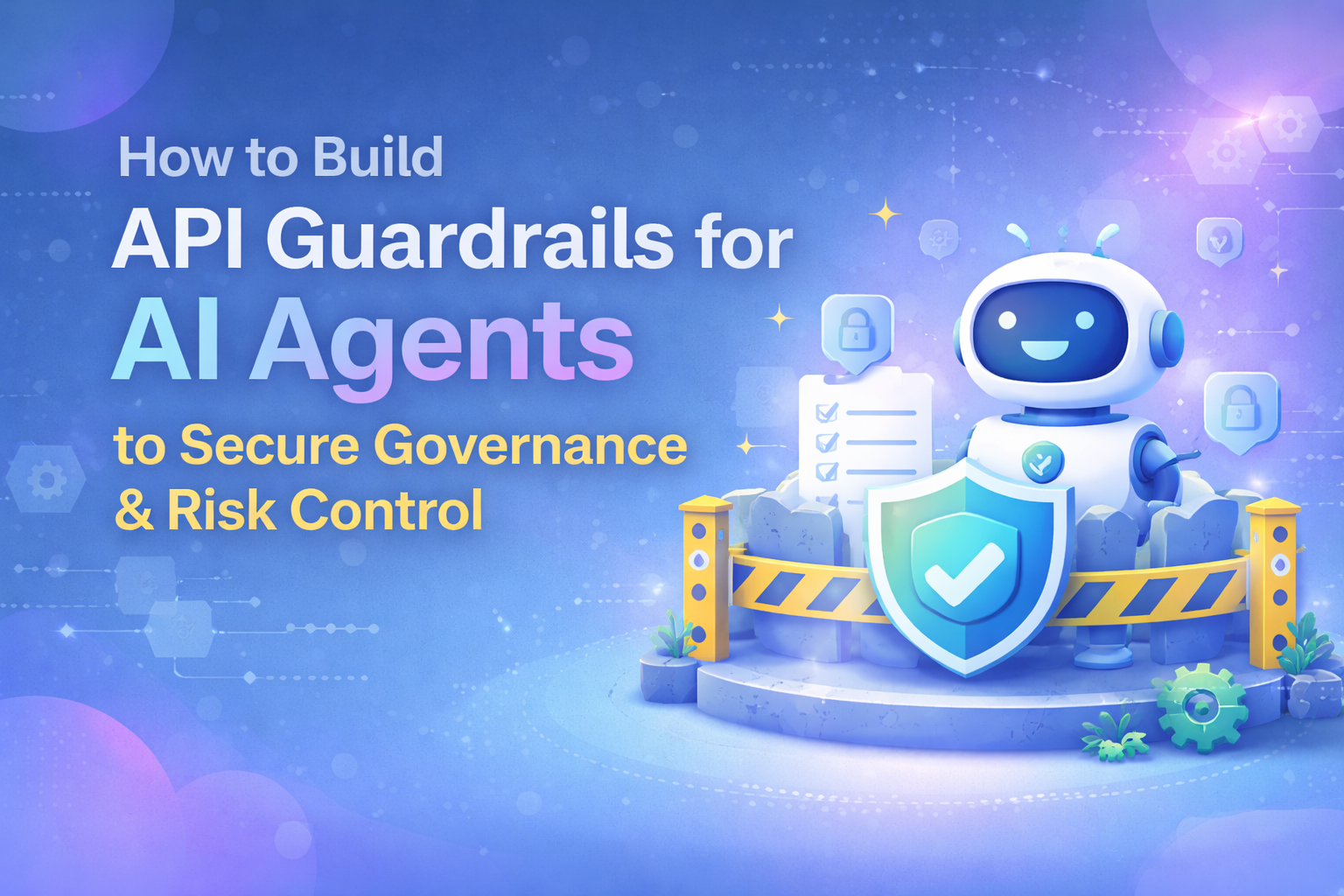
As APIs evolve to serve not just humans but AI agents, the security perimeter needs to shift from static firewalls to dynamic context. That’s where the Model Context Protocol (MCP) enters, enabling AI agents to call APIs autonomously, with context-aware access. But with great power comes significant risk.
Exposing enterprise APIs to autonomous agents without rigorous security controls can lead to privilege escalation, data leakage, or malicious orchestration at scale. Securing MCP isn’t just about authentication; it’s about defining what context is valid, who can invoke it, and how to govern it in real-time.
In this blog, we’ll discuss the key security threats, policies, and industry practices you need to implement to make your MCP deployments resilient and compliant.
What is MCP (Model Context Protocol)?
The Model Context Protocol (MCP) is a machine-readable standard that allows AI agents to understand how to safely interact with enterprise APIs. Instead of hardcoding API calls, MCP provides metadata, like available endpoints, authentication flows, usage policies, and sample calls in a structured format that LLMs can interpret. Think of it as a context layer that bridges the gap between AI reasoning and API execution.
By adopting MCP, enterprises can make their APIs discoverable, testable, and executable by autonomous agents without compromising control. It’s not just about simplifying API consumption; it’s about enforcing guardrails, exposing only what’s necessary, and enabling trusted execution through context-driven governance. MCP is foundational for enterprises preparing for the AI agent era.
Why does MCP security matter for enterprises?
As enterprises adopt MCP to enable AI agents, they also expose a new layer of API access, one that’s dynamic, contextual, and autonomous. Without strong security foundations, this flexibility can easily turn into a vulnerability. Here's why MCP security is critical:
- Autonomous execution raises the stakes: Unlike traditional API consumers, AI agents can act without human oversight. If context validation fails or access is misconfigured, agents might execute unintended actions, like placing orders, triggering workflows, or exposing sensitive data.
- Context can be faked or manipulated: MCP relies on “context” to determine what an agent is allowed to do. But if that context isn’t properly validated or signed, bad actors could craft fake context to bypass access rules or escalate privileges.
- Sensitive APIs become exposed by design: MCP is designed to make APIs discoverable to agents. This means internal or sensitive endpoints, if not tightly controlled could inadvertently become part of the exposed surface area, increasing breach risks.
- LLM misuse and prompt injection risks: Since agents are LLM-driven, they can be influenced by malicious inputs. If security guardrails aren’t enforced through MCP, prompt injections or jailbreaking could lead to API misuse via seemingly valid instructions.
- Governance gaps can lead to compliance failures: MCP-driven access needs policy enforcement who can call what, under which conditions, and why. Without proper auditing and logging mechanisms, organisations risk violating internal controls or industry regulations.
- Scale amplifies impact: Once MCP is in place, any misconfigured access pattern or exposed API isn’t just one mistake it’s a system-wide risk that every AI agent across the organisation might replicate instantly, leading to massive unintended consequences.
Common security threats in MCP environments
MCP environments are designed to make APIs agent-ready, discoverable, testable, and executable. But this very openness can expose organisations to new classes of threats. Unlike traditional API access, MCP introduces risks tied to dynamic context, LLM behaviour, and autonomous orchestration. Below are the most critical threats to watch out for:
1. Prompt injection leading to malicious API calls
LLMs powering AI agents can be tricked by adversarial prompts. A recent study found that prompt injection attacks had a success rate as high as 64.8% for some state-of-the-art models, dropping only to 27.8% even with enhanced ethical prompt engineering defences. Without proper input validation, a malicious actor could manipulate the agent into executing API calls it shouldn’t, including data deletion, financial transfers, or privilege escalation.
2. Context spoofing or forged context payloads
MCP relies heavily on structured context metadata to decide what an agent is authorised to do. Attackers may craft forged contexts to gain access to endpoints or invoke actions beyond their intended scope.
3. Overexposed API metadata via MCP files
If MCP files include too many internal endpoints or lack proper access segmentation, agents (or attackers) may discover sensitive APIs that were never meant to be publicly visible or agent-accessible. In fact, 84% of security professionals reported experiencing an API security incident in the past 12 months.
4. Broken authentication or token reuse
68% of organizations experienced API security breaches in 2024, often due to broken authentication, including poor token validation and session handling. MCP-integrated systems must manage secure auth flows for agents. Weak token validation or poor session handling can result in token reuse, stolen credentials, or unauthorised API access.
5. Inadequate rate limiting on agent traffic
Agents can execute high-frequency actions rapidly. Without robust rate limiting and throttling, APIs are vulnerable to abuse, cost spikes, or even unintentional denial-of-service from overactive agents.
6. Lack of signature verification for context
Unsigned or unverifiable MCP payloads are a major risk. If an attacker tampers with the context without any digital signature check in place, agents might act on falsified instructions.
7. Absence of audit trails for agent actions
When agents execute across APIs, tracing what happened, when, and why becomes complex. Without proper logging tied to agent identity and context, breaches can go undetected and compliance fails. In fact, 70% of businesses report challenges in managing API logs, further indicating a widespread gap in auditability for API-driven systems.
Essential security policies for MCP
MCP changes how APIs are consumed, moving from static integrations to dynamic, agent-driven interactions. That shift demands a new class of security policies focused on context validation, agent intent, and endpoint exposure. Here are the foundational policies every enterprise must implement:
- Define context boundaries explicitly: Not every piece of information should be part of the agent’s context. Enterprises must define a strict schema outlining what context fields are accepted, such as role, user ID, region, and permitted actions, and enforce rejection of any malformed or excessive payloads. This prevents overreach and ambiguity in agent permissions.
- Sign and verify all context payloads: Every MCP payload should be signed using enterprise-grade cryptographic methods before it's handed to an agent. Upon receipt, API gateways or AI gateways must validate the signature before honouring the request. This ensures the context hasn’t been tampered with mid-flight or generated by an untrusted source.
- Restrict the API surface exposed via MCP: Exposing your entire API library through MCP is risky. Enterprises should only include agent-relevant endpoints in MCP manifests, preferably scoped per use case or application. Use role-based tokens to govern what agents can “see,” ensuring that only explicitly permitted APIs are discoverable.
- Enforce role and intent-based access control: Basic RBAC isn’t enough when agents are operating autonomously. Policies should account for both the role of the agent and the declared intent in the context. For example, “retrieving a balance” vs “initiating a transfer.” These controls add semantic understanding to API access decisions.
- Throttle agent-specific traffic: AI agents can execute at a scale and speed that far exceeds human use. Without adaptive rate limits, even well-meaning agents can flood APIs with redundant calls. Policies must throttle based on context identity, endpoint sensitivity, and intent, with stricter thresholds for high-risk actions.
- Enable end-to-end audit logging: Every agent interaction must be logged with traceable metadata, including the original context, action taken, timestamp, agent identity, and response. These logs are critical for investigating breaches, enforcing accountability, and meeting compliance requirements across industries.
- Isolate test and production agent environments: Agents used in development, QA, or sandbox environments should never be allowed to call production APIs. Use separate MCP registries and credential sets for test and prod environments, ensuring that no test context accidentally leaks into live systems.
Checklist to follow for MCP security
Securing MCP isn’t just about one-off configurations; it’s about continuous, layered defence. From developer workflows to runtime validation, every stage of the agent-to-API interaction needs safeguards. Use this checklist to reinforce your MCP security posture.
- Treat context as a first-class security artifact: Validate, sanitize, and monitor every context payload the same way you would a user credential or auth token.
- Use short-lived, purpose-bound credentials: Avoid long-term API keys. Instead, generate time-bound, task-specific tokens scoped to the agent’s declared intent.
- Separate human and agent access paths: Don’t mix UI-based and agent-based access flows. Maintain dedicated endpoints and auth policies for agent interactions.
- Scan MCP files for sensitive leakage: Before publishing MCP metadata, scan it for hardcoded credentials, test endpoints, or internal system references.
- Automate policy enforcement in CI/CD: Make sure context validation rules, signature checks, and access scopes are tested and enforced during deployment.
- Regularly rotate keys and context secrets: Set up automated key rotation and invalidate stale context secrets across all environments, especially for high-risk APIs.
- Simulate agent behaviour in staging: Test how different agents interpret and act on your MCP files. This helps catch ambiguous context or dangerous defaults early.
Industry trends in MCP security and governance
As more enterprises adopt MCP to enable AI-driven automation, the security landscape around it is rapidly evolving. From AI gateways to fine-grained access policies, new patterns are emerging to balance openness with control. Here are key trends shaping the future of MCP security and governance:
1. Shift from role-based to intent-aware access control
Enterprises are moving beyond traditional RBAC models and introducing policies that evaluate the agent’s purpose, not just identity. This ensures context-specific authorisation that aligns with real-world agent behaviours.
2. AI gateways enforcing runtime context validation
New gateway layers are emerging that sit between agents and APIs, not just routing calls, but validating context in real time. These AI gateways verify signatures, enforce policy, and inject audit metadata on the fly.
3. Automated agent attestation and trust scoring
To differentiate between trusted enterprise agents and third-party or rogue agents, companies are introducing agent attestation, where agents sign requests with identity proofs and build a reputation over time.
4. Integration of MCP with zero-trust architectures
MCP security is being embedded into broader zero-trust frameworks. Rather than assuming trust within a network, enterprises are validating every agent-API interaction, even for internal systems.
5. Secure metadata generation through CI/CD pipelines
DevSecOps teams are now treating MCP context and metadata as code, automating validations, signature checks, and access rules as part of build pipelines. This reduces manual errors and keeps security policies consistent across environments.
How does Digital API secure MCP for enterprises?
At Digital API, MCP security is built into the fabric of the platform, not treated as an afterthought. Every MCP file generated through the system is signed with tamper-proof keys and scoped to its intended agent, environment, and use case. This ensures that only verified AI agents can access the right APIs with the right context.
Access to MCP manifests is tightly governed through token-based discovery, mutual TLS, and role + intent-based access control. Agent identity, purpose, and rate limits are enforced at the gateway layer, ensuring runtime validation of every call triggered via MCP.
DigitalAPI.ai also separates dev and prod environments, enabling safe experimentation without risking data exposure. All agent activity is logged with full traceability, and enterprises can plug in their compliance, audit, or security analytics tools. Combined with native CI/CD integrations and alerting, the platform offers a secure, governed MCP adoption at enterprise scale.
You’ve spent years battling your API problem. Give us 60 minutes to show you the solution.
.svg)

%20(1).png)





